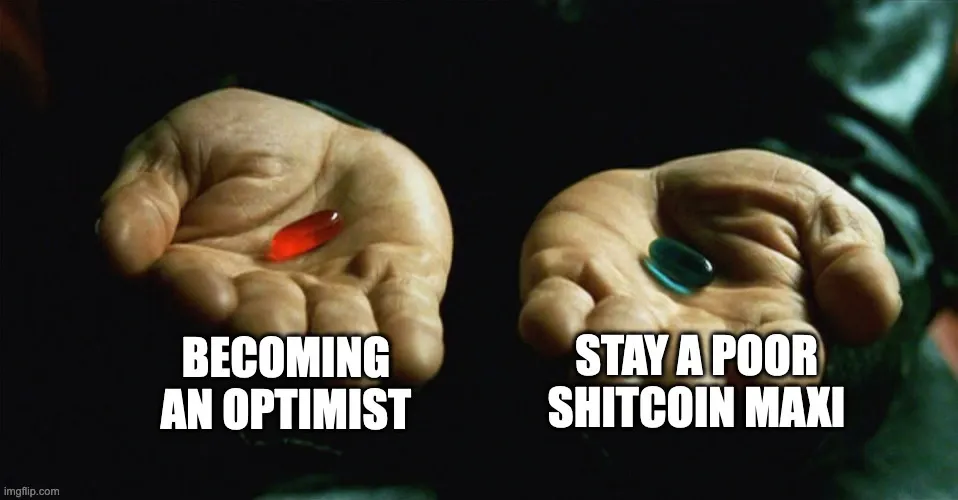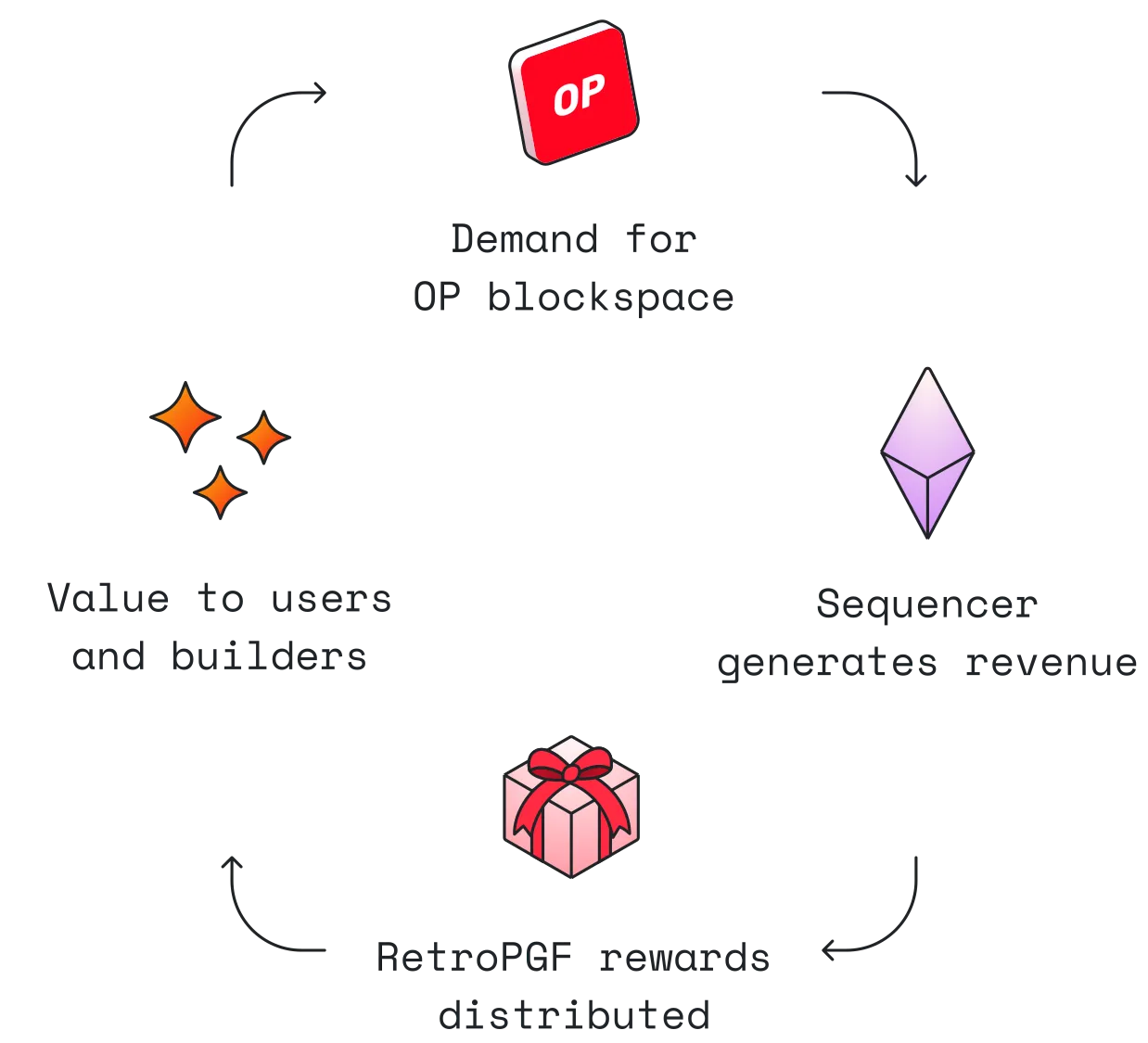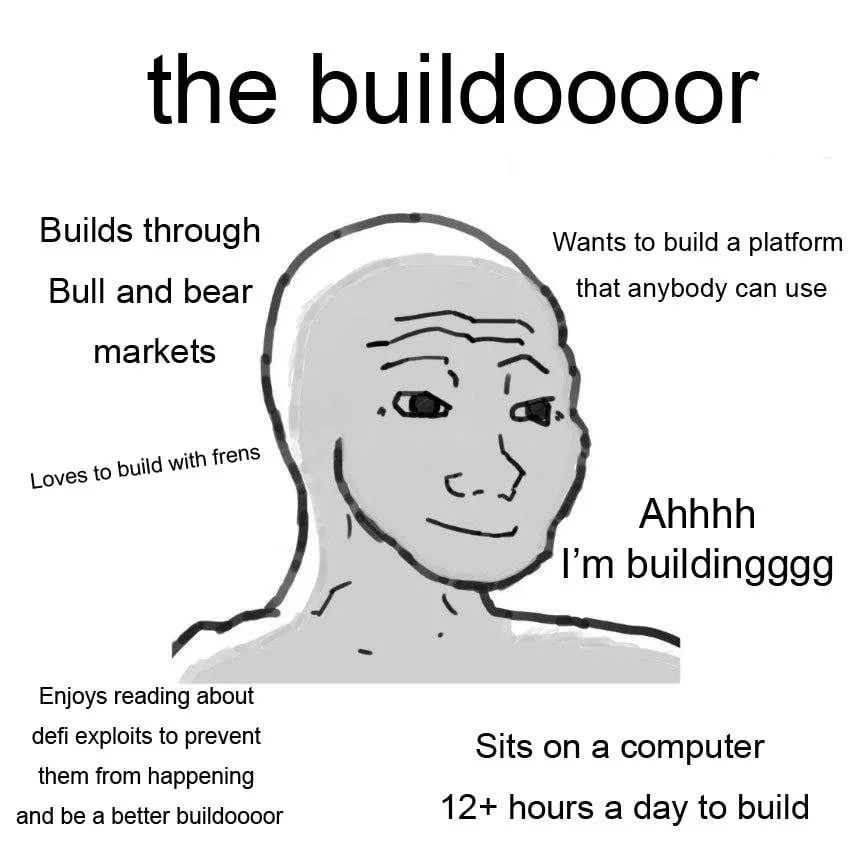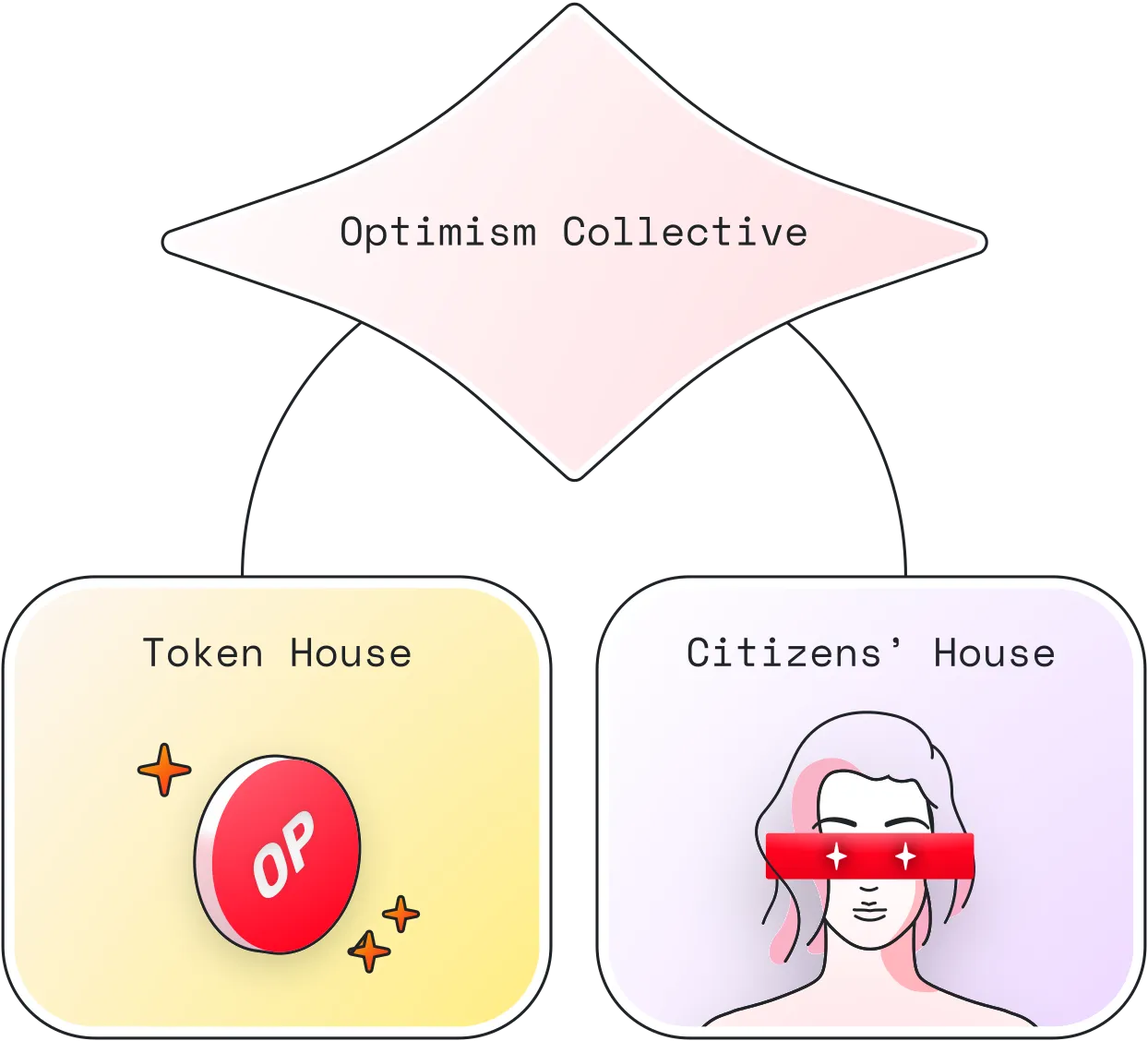Guess what? You totally should! And you're in luck, 'cause that's what we're diving into today: from the ABCs of Optimism, to the big dreams driving it, to the cool folks making it happen, and even how you can jump into the mix if you're feeling it.

Optimism might seem like a tough cookie at first glance. But hey, don't be deterred! It's actually not that wild once you break it down. So, how about we dive down this rabbit hole together?
Alright, here's the lowdown on what we'll unpack in this guide:
- What is Optimism
- What are Public goods, the Optimistic Vision and the Optimistic Flywheel
- The who's who in Optimism's governance
- How you can get involved in Optimism’s governance or start building cool stuffs and get rewarded for it!
What is Optimism?
Optimism, a Layer 2 solution atop Ethereum, offers users and developers faster, cost-effective transactions while retaining Ethereum's robust security. It's a key player in addressing Ethereum’s scalability issues, with a current TVL of $2.4 billion, trailing its competitor, Arbitrum, which leads at $5.2 billion.
ℹ️ A Layer 2 network or blockchain refers to a set of solutions that help scale a blockchain like Ethereum or Bitcoin (referred to as a Main or base layer or even layer 1) by handling transactions off that base layer while taking advantage of the robust decentralised security model this layer 1 provides. Still confused? Read our guide What is a Layer 2? A Detailed Introduction (2023)
For the tech-savvy and devs out there, Optimism harnesses a scaling technique called "Optimistic rollup" Plus, it's EVM-compatible, so deploying a smart contract here is just like doing it on Ethereum. No difference.
Optimism boasts a variety of solid dApps you can play around with. Fancy swapping tokens? Check out Velodrome. Need to borrow some funds? Aave has got your back. You can snag perps on Kwenta or dive into options trading with Lyra. And if you're wondering where to start, I've penned a guide to nudge you in the right direction.
Using Optimism should feel quite familiar if you're accustomed to Ethereum. For every transaction you make, whether it's minting an NFT, transferring a token, or purchasing a new digital asset, you'll incur a small fee in ETH. The advantage? It's approximately 10 times more cost-effective than Ethereum, and indications suggest that it might become even cheaper in the near future.
One more tidbit to throw in: Optimism has its unique (ERC-20) token named OP. It's not merely a digital asset; think of it as a ticket to the decision-making table. Holding OP, a governance token, grants you a voice in shaping the direction of the Optimism Collective.
If you want to find out more about Optimism, read our guide What is the Optimism Blockchain? Everything You Need to Know (2023)
What’s the Optimistic Vision?
Alright, now that you're acquainted with Optimism (and maybe even took it for a spin), let's dive into its essence, its core principles, and what it truly represents. Welcome to the realm of the Optimistic Vision.

What are Public Goods?
Before diving into the Optimistic Vision, it's key to understand public goods. They're the pillars of our society but frequently get short-changed. Why? Because the incentives aren’t always in the right places, making folks juggle between pocketing profits and contributing to the broader good. This is precisely why governments often step in to offer public goods – private entities find it tough to make a buck from them.
ℹ️ Public goods are things that we all share and consume. They cannot be taken away from anyone. Think of Clean Air, National Parks, Open-Source software, Democracy, Free Speech or even Libraries, those are all public goods as they are things that are available, free at the point of use, to everybody.
So, if we can't lean on government support to fund these, how can we ensure there are solid incentives in the web3 space that motivate people to contribute to and uphold public goods?
Enter the Optimistic Vision. It might take a moment to fully grasp, but at its core, it's rooted in the idea that "Impact = Profit" Optimism rakes in significant revenue, and it's eager to share the spoils with those championing and nurturing public goods.
How should this be structured, though? Should a single, private entity dictate who's impactful and the reward they deserve? That doesn't quite sit well with the web3 spirit. Instead, the Optimism foundation (the organization steering the Optimism blockchain) birthed the Optimism Collective. It's a cohesive group of companies, communities, and individuals, all united under a shared agreement to maintain a fair balance where "Impact = Profit" The role of the Optimism Collective? To channel funds towards initiatives and groups working for the collective benefit.
What is the Optimistic Flywheel?
It all sounds pretty promising, but is it viable? Can Optimism truly back those who are toiling away, supporting and advancing public goods?
Alright, I'm an optimist, so I believe it can work. It's all about the Optimistic Flywheel. When more people use Optimism, the network makes more money from transaction fees. A part of these fees goes to those making great tools and services. So, the better tools we get, the more people want to use Optimism. More users mean more fees, which can then reward more builders. It’s like a cycle that keeps improving itself. Think of it like a wheel that keeps spinning faster the more we push it. Makes sense, right?

Impact = Profit
I can sense you thinking, "So, 'Impact = Profit'? Alright, but how's that measured?"
Honestly, it's not a walk in the park. Ensuring everyone profits according to their positive contribution has its challenges. Take this example: If you create software and give it away for free, how do we ensure you're compensated in line with the difference you made?
Determining the impact and value of contributions might be more straightforward by examining past successes rather than future potential. What if, periodically, society took a moment to reflect, gather feedback from its members, and distribute earnings based on past contributions? Sounds ideal, doesn't it? That's the very principle Optimism operates on with RetroPGF. It compensates individuals grounded in their historical impact.
Naturally, Optimism understands the hurdles of kickstarting and funding a venture. Not everyone can afford to develop software on a whim, crossing fingers for a future reward. That's why they've set up grants for those builders at heart. We'll dive deeper into that aspect later on in this piece.

Optimism Governance explained
Earlier, I touched on the Optimism Collective, which is essentially “a large-scale experiment in digital democratic governance, built to drive rapid and sustainable growth of a decentralized ecosystem, and stewarded by the newly formed Optimism Foundation.”
Now, let's ground ourselves and delve into the Optimism's Governance – understanding its workings and identifying the key players and institutions involved.
The Optimism Foundation
At the heart of it all is the Optimism Foundation. This is a nonprofit group aimed at growing the Optimism Collective. But, it's just one part of a bigger picture. The Foundation is surrounded by many other groups, teams, and people, all driven by the Optimistic Vision. Its main job? Help the Optimism Collective grow, improve the overall Optimism environment, and push the tech behind it forward.
The Optimism Collective and its Governing Houses
Next up is the Optimism Collective. Since its introduction in 2022, it's split into two main voting groups, each playing its part to juggle long-term goals with immediate rewards: the Citizens’ House and the Token House.

The Token House
The journey of governing the Optimism Collective took off with the introduction of the OP token and the establishment of the Token House.
Come May 2022, the OP token (Optimism's governance token) was airdropped to countless addresses of users who showed community-driven, positive actions. From that moment, those with OP tokens stepped into the role of Token House members, but only if they assigned their tokens (to another person or even back to themselves) to activate their voting rights.
As Token House members, OP holders are responsible for submitting, deliberating, and voting on various types of governance proposals, such as:
- Governance fund grants
- Protocol upgrades
- Inflation adjustment
- Director removal
- Treasury appropriations
- Rights protection
The Citizens’ House
The other key component of the Optimism Collective's voting system is the Citizens’ House. Right now, its main duty is to oversee the distribution of funds for Optimism's retroactive public goods, which is currently in its third phase.
Take a peek at what the future of Optimism Governance looks like!
Getting involved in the Optimism Governance
Keeping up? Great! 💪
You're probably itching to know: "Where do I fit into all this? How can I jump in and participate?"
Don't worry, we're about to delve into that.
Want to be a part of the Optimism Collective?
If everything I've mentioned so far about the Optimistic Vision, the Optimistic Flywheel, and the idea of supporting public goods resonates with you and gets your pulse racing, then diving into Optimism governance might just be your calling.
Jumping in is straightforward. Begin by sharing your thoughts on the Optimism forum and play a role in shaping Optimism's path forward.
Fancy having a say in decisions? To vote on different proposals, simply purchase and assign at least 1 OP token to yourself (or have someone else allocate their vote to you). While it might not grant you a ton of influence, it's a step in the right direction!
If you're more inclined to have a seat at the Citizen’s House and weigh in on RetroPGF decisions, or vote on who deserves rewards for their contributions, then securing a badge holder status should be your first move.
Interested in Contributing?
If you're passionate about contributing, whether you're a developer, marketer, designer, educator, or hold any other expertise, we welcome your involvement. Begin by exploring the Optimism Collective Ecosystem Contributions repository for established avenues to contribute. If you identify an opportunity or idea not already listed, we encourage you to pursue it and bring it to the collective's attention.
If you're in need of funding assistance, there are several grant opportunities available, including:
- Collective Grants: These encompass the Builders Grants, Growth Experiments Grants, Token House Missions, and Foundation Missions. You can find a detailed process on how to apply for these grants in this comprehensive guide.
- Retroactive Grants (RetroPGF): As discussed earlier, these are also available to support your endeavours.
Are you a BUIDLER? Take a look at our RetroPGF Beginner guide and get rewarded for putting in the work and helping the Optimism Collective!
Conclusion: Envisioning an Optimistic Future
Understanding the governance of Optimism is quite straightforward once you've familiarized yourself with the Optimistic Vision. It all falls into place after that, doesn't it?
So, are you ready to join the movement and become a part of the Optimism Collective?
Do you have any questions or comments? Ping me on Twitter.

Article by
Maxime ServaisI'm a Software Developer and Tech Writer over at Ethereum Ecosystem. Basically, I make sure everything we cook up is top-notch and awesome!
